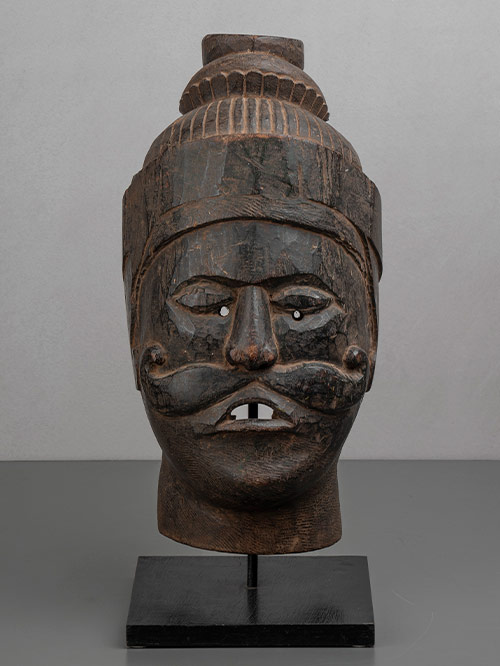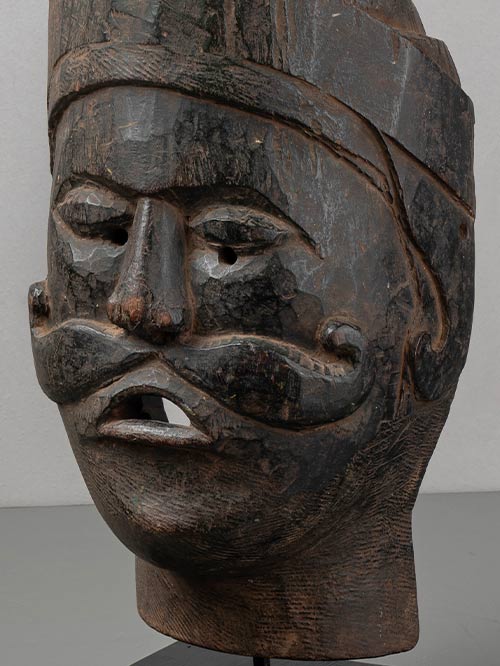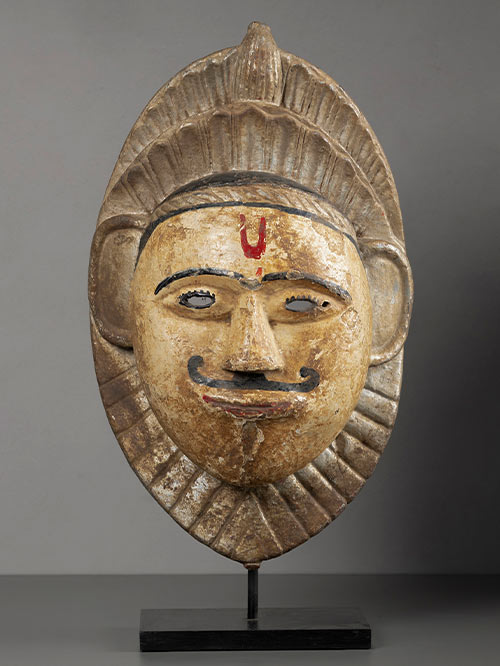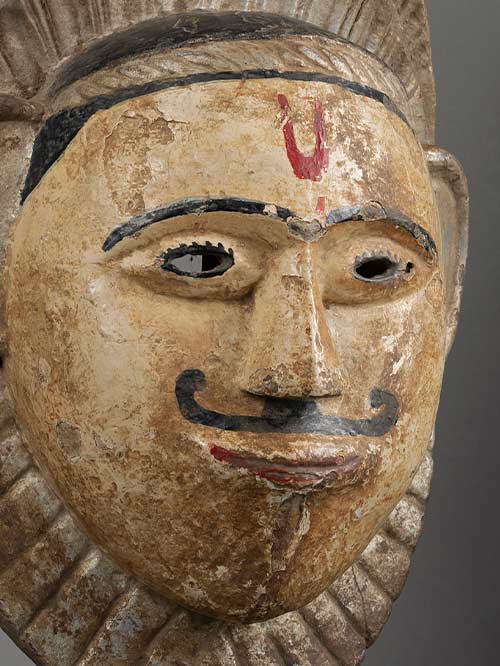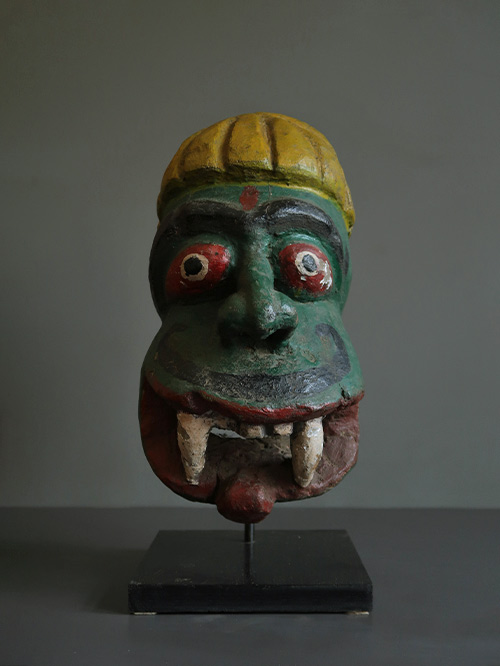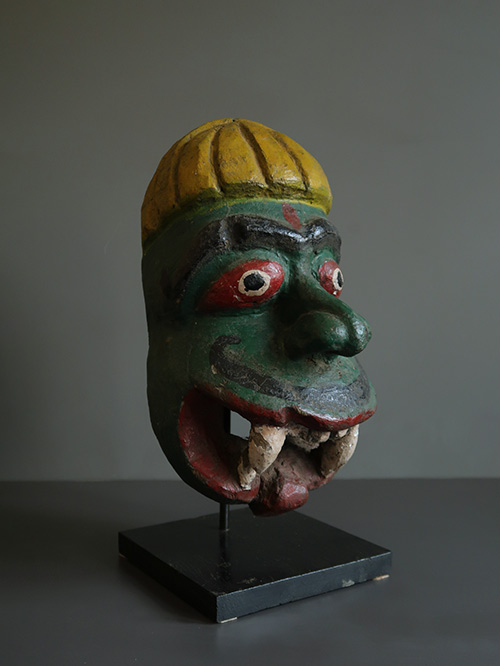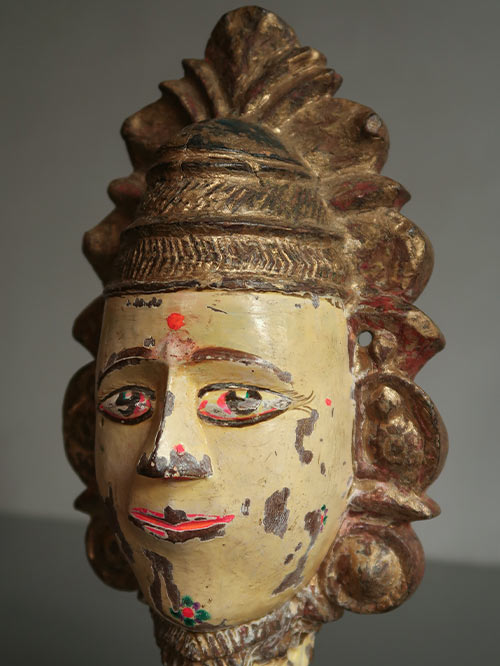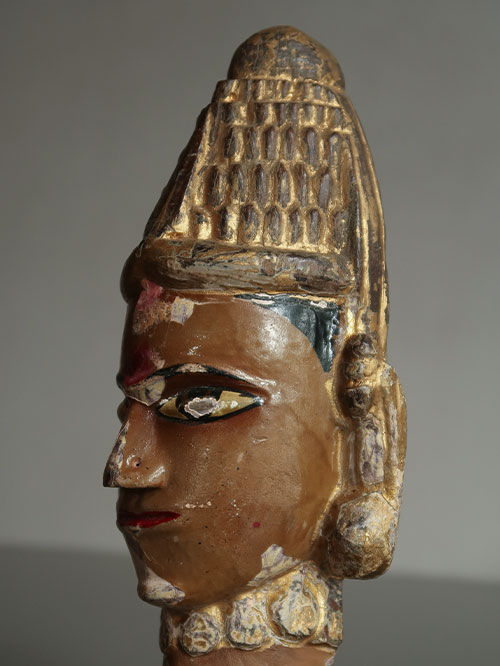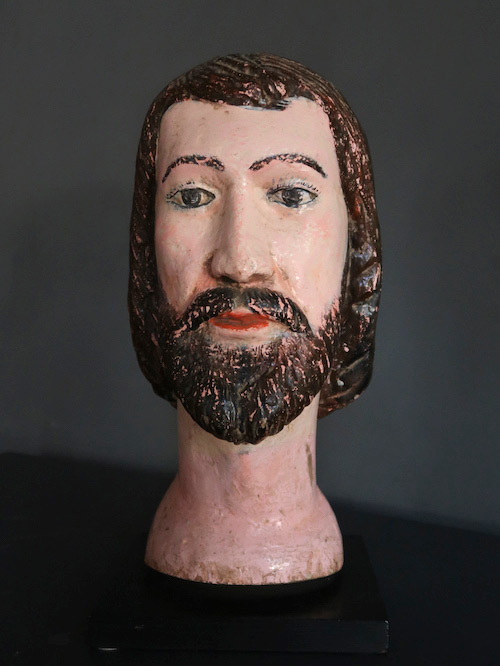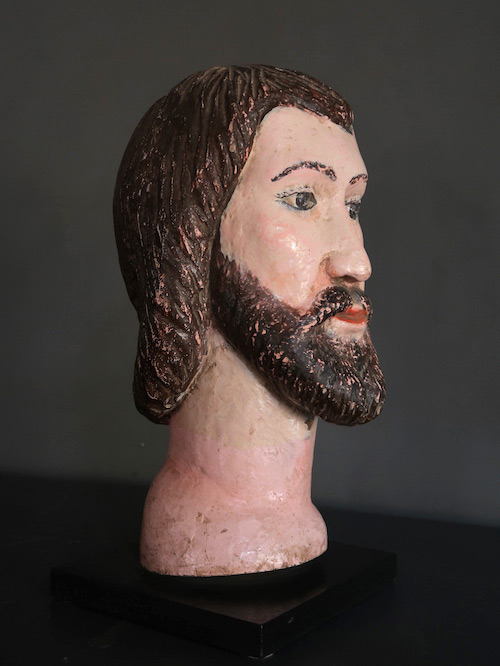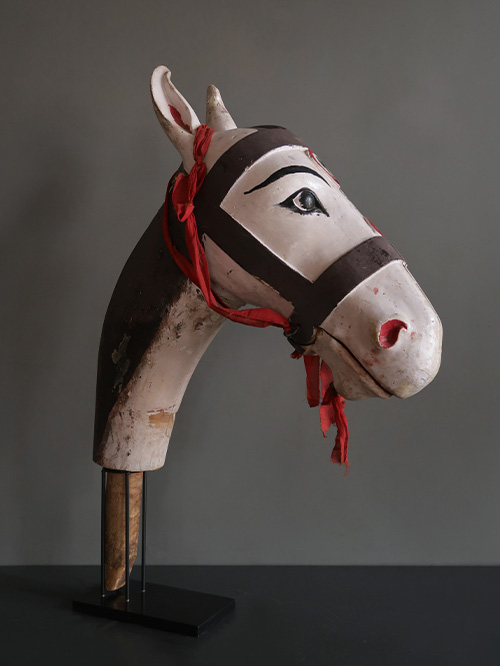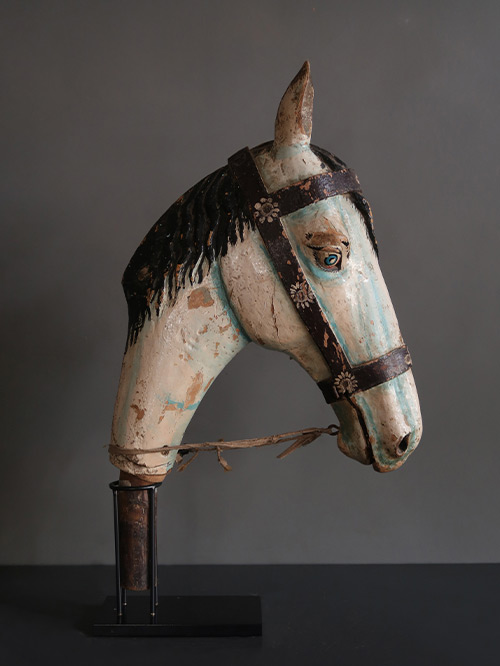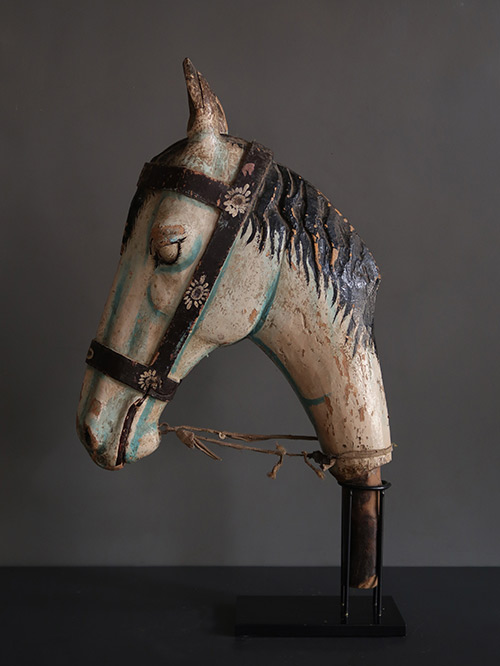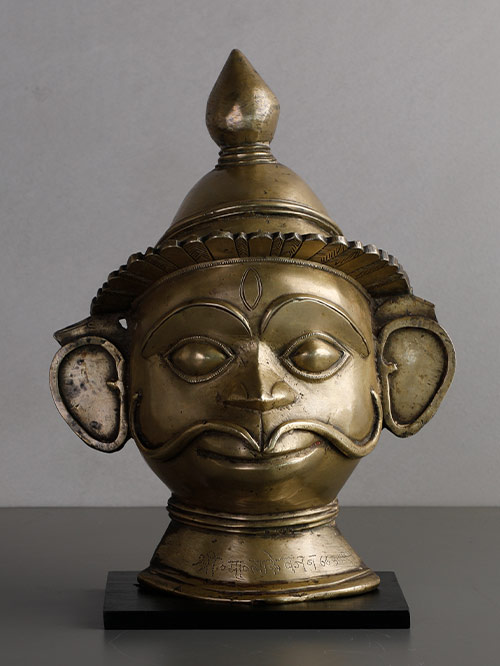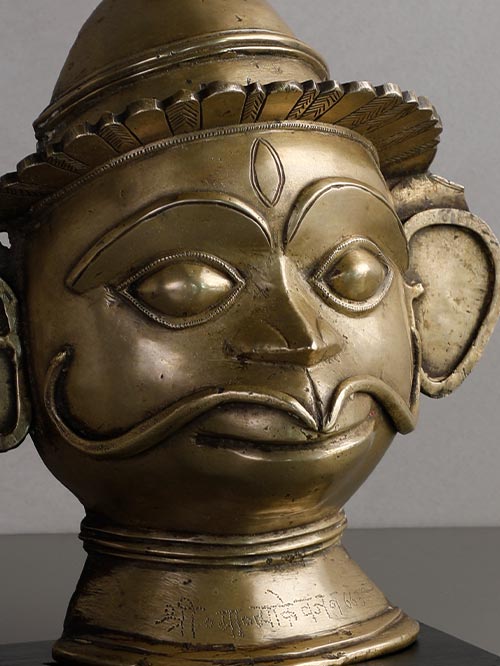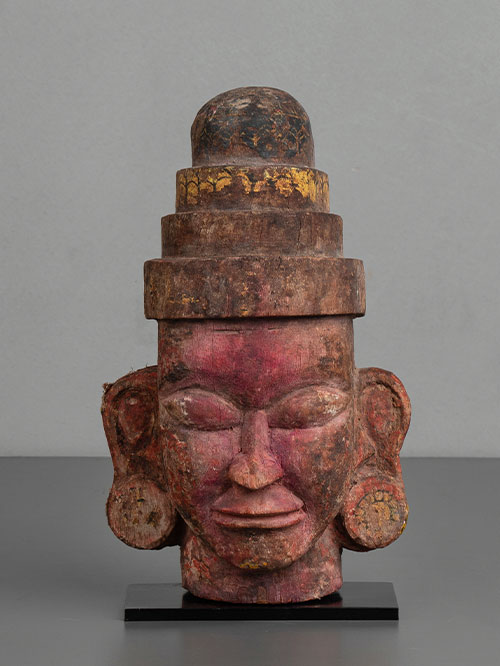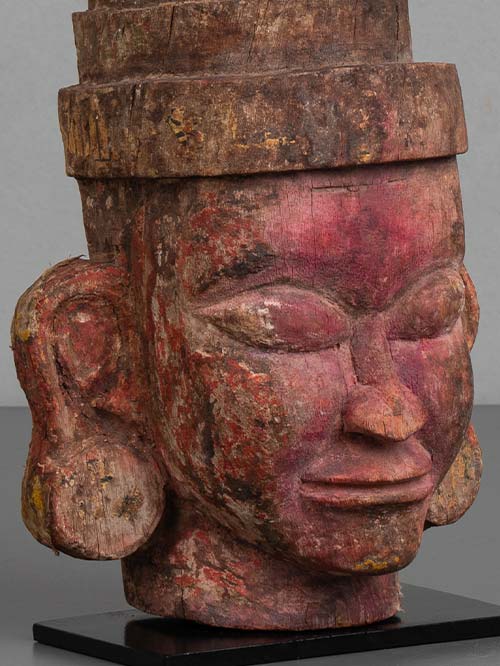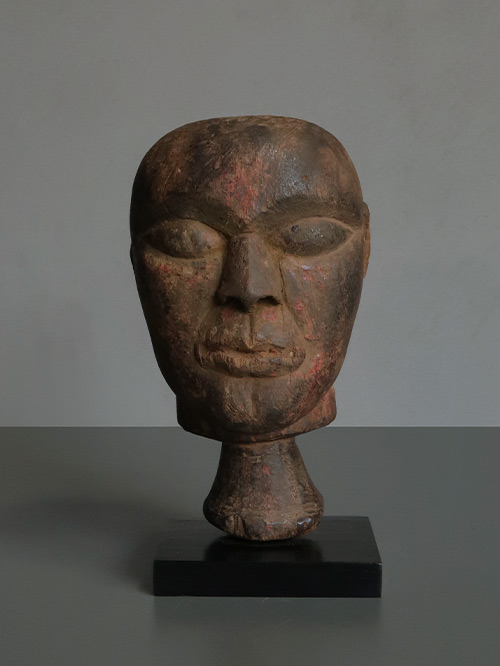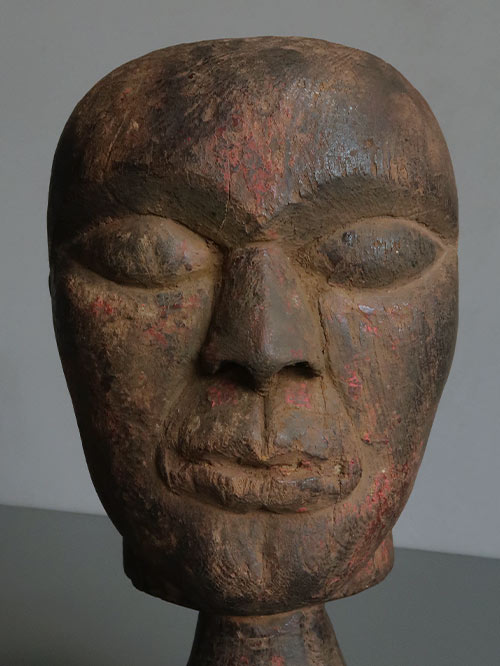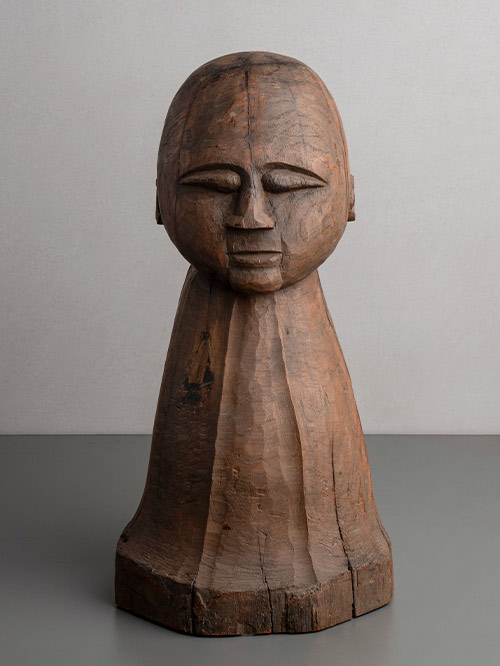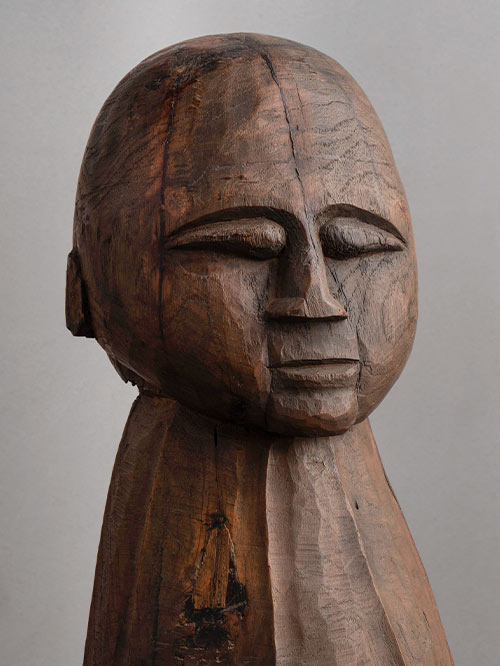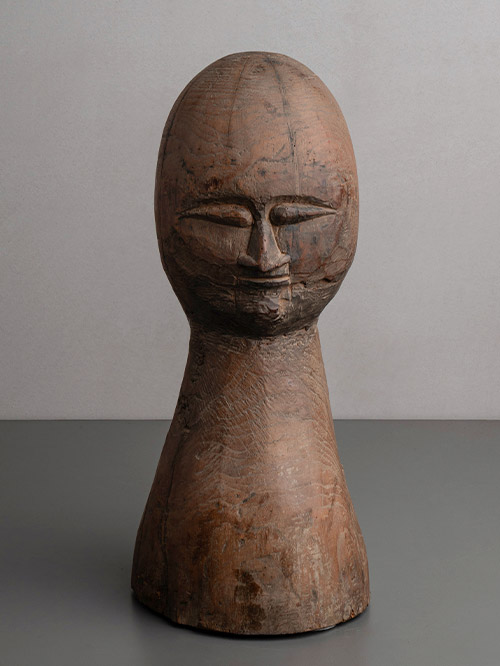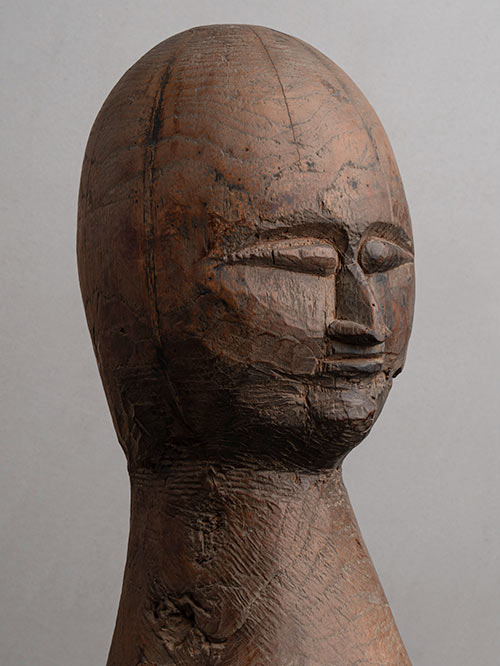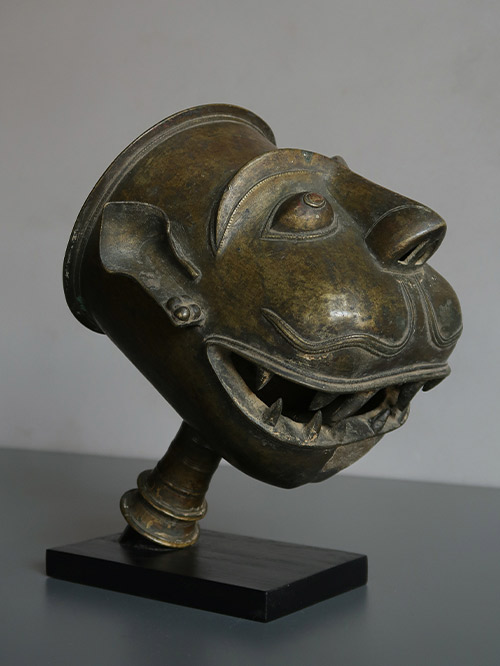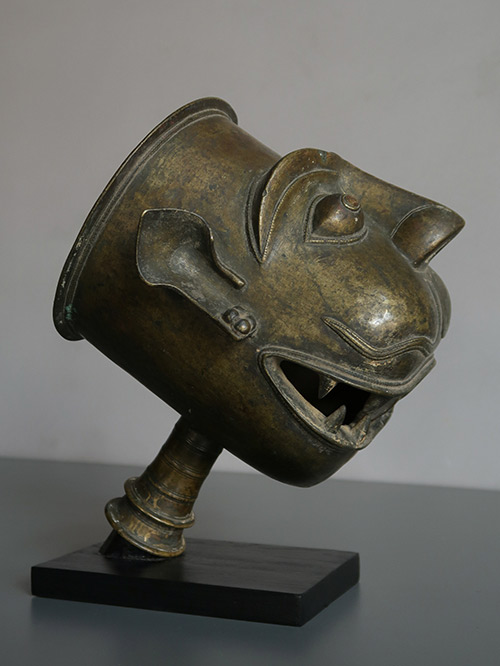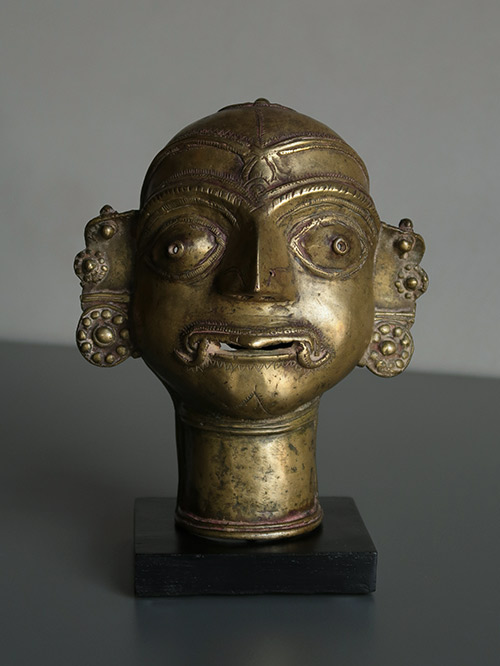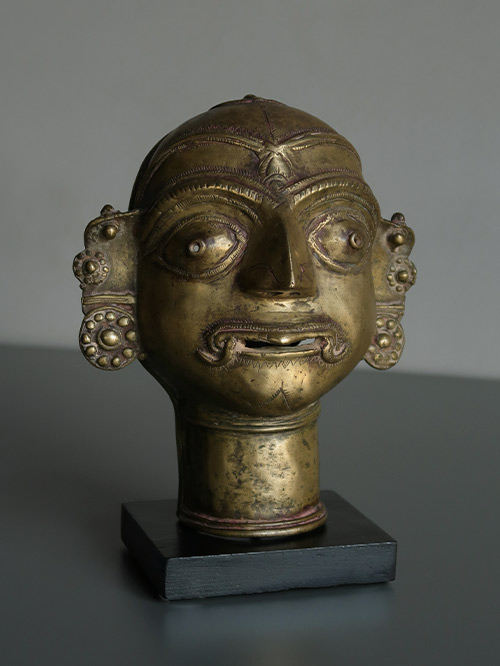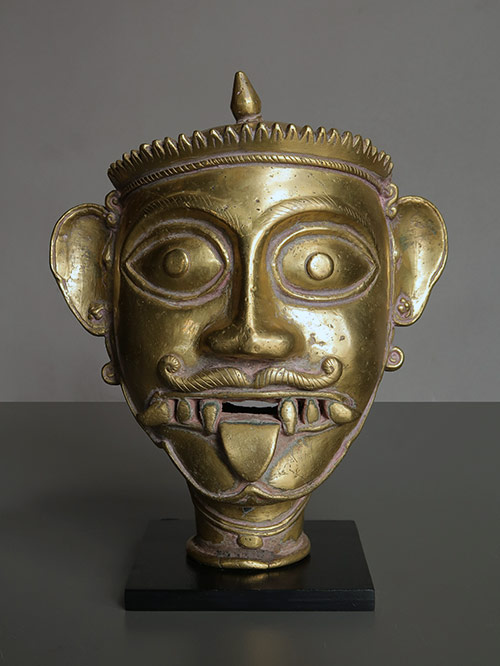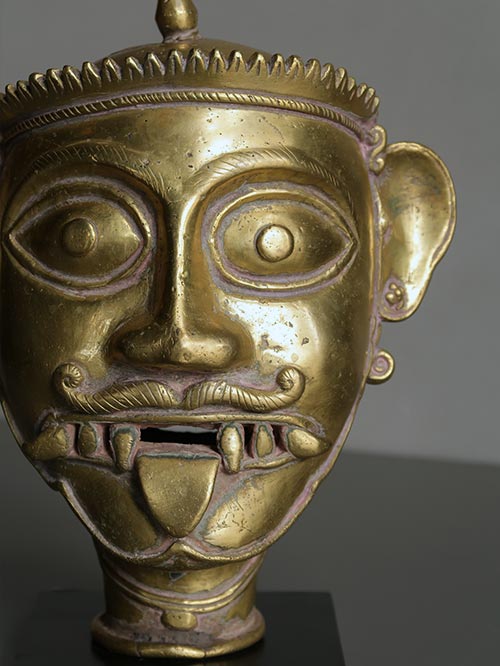Dancing Mask
Konkan region (Karnataka)
Wood
An unusual unpainted dancing mask of a male figure worn during performances by members of the Kokna tribe. The stylised face wears a tiered crown and has a prominent upturned moustache sitting over its open mouth. Tiny circular eye holes have been cut out beneath the eyes to help the dancer navigate while wearing the mask.
The Kokna are a major tribe found in Gujarat, Maharashtra, Karnataka, Rajasthan. The tribe carve masks representing mythological characters for the Bhavada festival. This festival is a combination of dance and drama, celebrated during March and April. The masks were carved from soft wood which allows an intricate detailing of various facial expressions. Modern masks are now made from Papier-mâché as they are lighter and more durable.
The characters of the tribal masks represent either deities including Vishnu, Ravana and Ganesha, ancestral spirits, totem, mythological character, animals and birds. Every dancer enacts steps typical of the character whose mask he wears, as he dances to the tune of musical instruments like the Sur, Kahali and Sambal. During the festival procession, masked dancers enact myths from tribal folklore as well as Hindu epics such as the Ramayana and Mahabharata.
Mask Size(cms): 43 (H) x 22 (W) x 15 (D), 48 (H with stand)
Mask Size(inches): 16.9 (H) x 8.7 (W) x 5.9 (D), 18.9 (H with stand)

